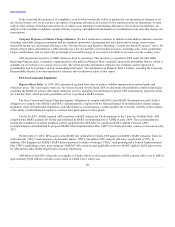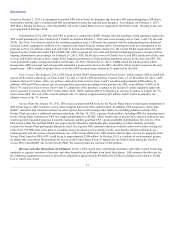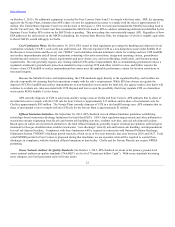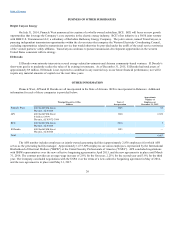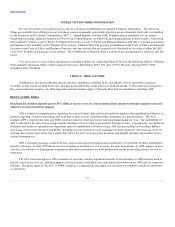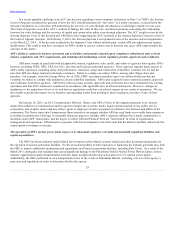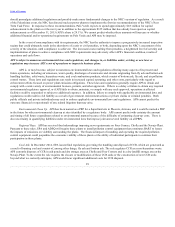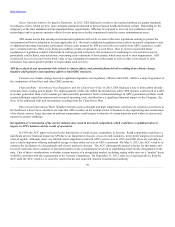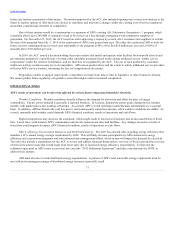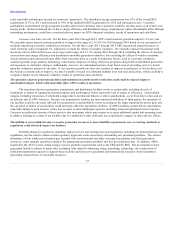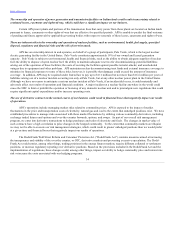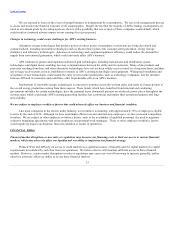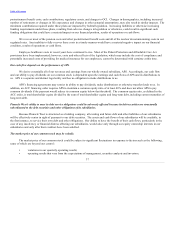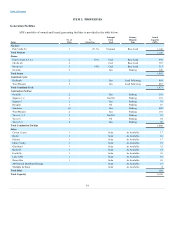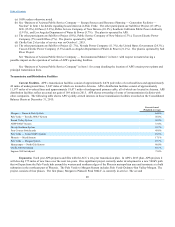APS 2015 Annual Report Download - page 33
Download and view the complete annual report
Please find page 33 of the 2015 APS annual report below. You can navigate through the pages in the report by either clicking on the pages listed below, or by using the keyword search tool below to find specific information within the annual report.
Table of Contents
Ozone National Ambient Air Quality Standards. In 2015, EPA finalized revisions to the national ambient air quality standards
for nitrogen oxides, which set new, more stringent standards intended to protect human health and human welfare. Depending on the
stringency of the final standards and the implementation requirements, APS may be required to invest in new pollution control
technologies and to generate emission offsets for new projects or facility expansions located in ozone nonattainment areas.
APS cannot assure that existing environmental regulations will not be revised or that new regulations seeking to protect the
environment will not be adopted or become applicable to it. Revised or additional regulations that result in increased compliance costs
or additional operating restrictions, particularly if those costs incurred by APS are not fully recoverable from APS’s customers, could
have a material adverse effect on its financial condition, results of operations or cash flows. Due to current or potential future
regulations or legislation coupled with trends in natural gas and coal prices, the economics of continuing to own certain resources,
particularly coal facilities, may deteriorate, warranting early retirement of those plants, which may result in asset impairments. APS
would seek recovery in rates for the book value of any remaining investments in the plants as well as other costs related to early
retirement, but cannot predict whether it would obtain such recovery.
APS faces physical and operational risks related to climate effects, and potential financial risks resulting from climate change
litigation and legislative and regulatory efforts to limit GHG emissions.
Concern over climate change has led to significant legislative and regulatory efforts to limit CO2, which is a major byproduct of
the combustion of fossil fuel, and other GHG emissions.
Financial Risks - Greenhouse Gas Regulation and the Clean Power Plan. In 2015, EPA finalized a rule to limit carbon dioxide
emissions from existing power plants. The implementation of this rule within the jurisdictions where APS operates could result in a shift
in in-state generation from coal to natural gas and renewable generation. Such a substantial change in APS’s generation portfolio could
require additional capital investments and increased operating costs, and thus have a significant financial impact on the Company. See
Note 10 for additional risks and uncertainties resulting from the Clean Power Plan.
Physical and Operational Risks. Weather extremes such as drought and high temperature variations are common occurrences in
the Southwest’s desert area, and these are risks that APS considers in the normal course of business in the engineering and construction
of its electric system. Large increases in ambient temperatures could require evaluation of certain materials used within its system and
represent a greater challenge.
Deregulation or restructuring of the electric industry may result in increased competition, which could have a significant adverse
impact on APS’s business and its results of operations.
In 1999, the ACC approved rules for the introduction of retail electric competition in Arizona. Retail competition could have a
significant adverse financial impact on APS due to an impairment of assets, a loss of retail customers, lower profit margins or increased
costs of capital. Although some very limited retail competition existed in APS’s service area in 1999 and 2000, there are currently no
active retail competitors offering unbundled energy or other utility services to APS’s customers. On May 9, 2013, the ACC voted to re-
examine the facilitation of a deregulated retail electric market in Arizona. The ACC subsequently opened a docket for this matter and
received comments from a number of interested parties on the considerations involved in establishing retail electric deregulation in the
state. One of these considerations is whether various aspects of a deregulated market, including setting utility rates on a “market” basis,
would be consistent with the requirements of the Arizona Constitution. On September 11, 2013, after receiving legal advice from the
ACC staff, the ACC voted 4-1 to close the current docket and await full Arizona Constitutional authority
30


